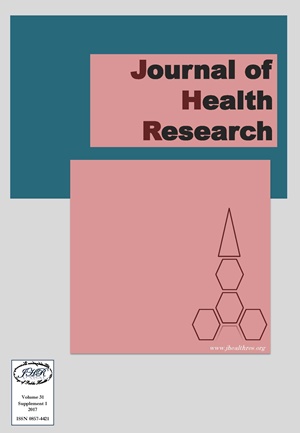Association among Socio-Demographic Characteristics and Oral Health Service Utilization among Thai over Time
Keywords:
Oral health service, Demand over time, ThailandAbstract
Background: For planning of oral health workforce and oral health service system in Thailand, better understanding in oral health care utilization behavior of population over time is needed. This study aimed to explore only individual level specifically in socio-demographic characteristics which could be influenced in oral health service utilization among Thai.
Method: A retrospective data analysis, which studied cohort behavior of population regarding oral health service utilization was conducted. Micro data from six waves of the Health and Welfare Survey of Thailand covering the year 2003, 2007, 2009, 2011, 2013, and 2015, were used. Descriptive analysis and binary logistic regression were used for exploring the outcome, applying three matrices of Age-Period-Cohort analysis for the perspective of time. Socio-demographic characteristics of population were divided into predisposing – individual factors, predisposing – family factors, and enable factors. Three different composition of those factors were used for exploring appropriated model for predicting dental health care demand.
Results: All independent variables had significant association to probability of oral health service utilization. However, the odds ratio of education of individual and role in family showed remarkable changes after controlling for age group and cohort. There were wider gaps of odds ratio among age groups after controlling for all independent variables. In the model which was controlled for predisposing-individual factors, gender showed more remarkably impact to oral health service utilization than other variables. After controlling for both predisposing- individual factors and family factors, education of individual showed remarkably impact to oral health service utilization. After controlling for all three factors, variable which showed remarkably impact to oral health service utilization was shifted to region of residence. However, in all models, education of family head impact to oral health service utilization independently from all other control variables. In term of predicted power, although there were not much different among all three models and also base model, the model that controlled for all three factor, which included age group, cohort, gender, education of individual, education of family head, region of residence, and health insurance, showed the highest power of prediction.
Conclusion: Information on gender, education of individual, education of family head, region of residence, and health insurance were recommended to include in forecasting of demand for dental health care. All models which included these set of variables were more appropriated for forecasting dental care demand than considering only differences among age group.







